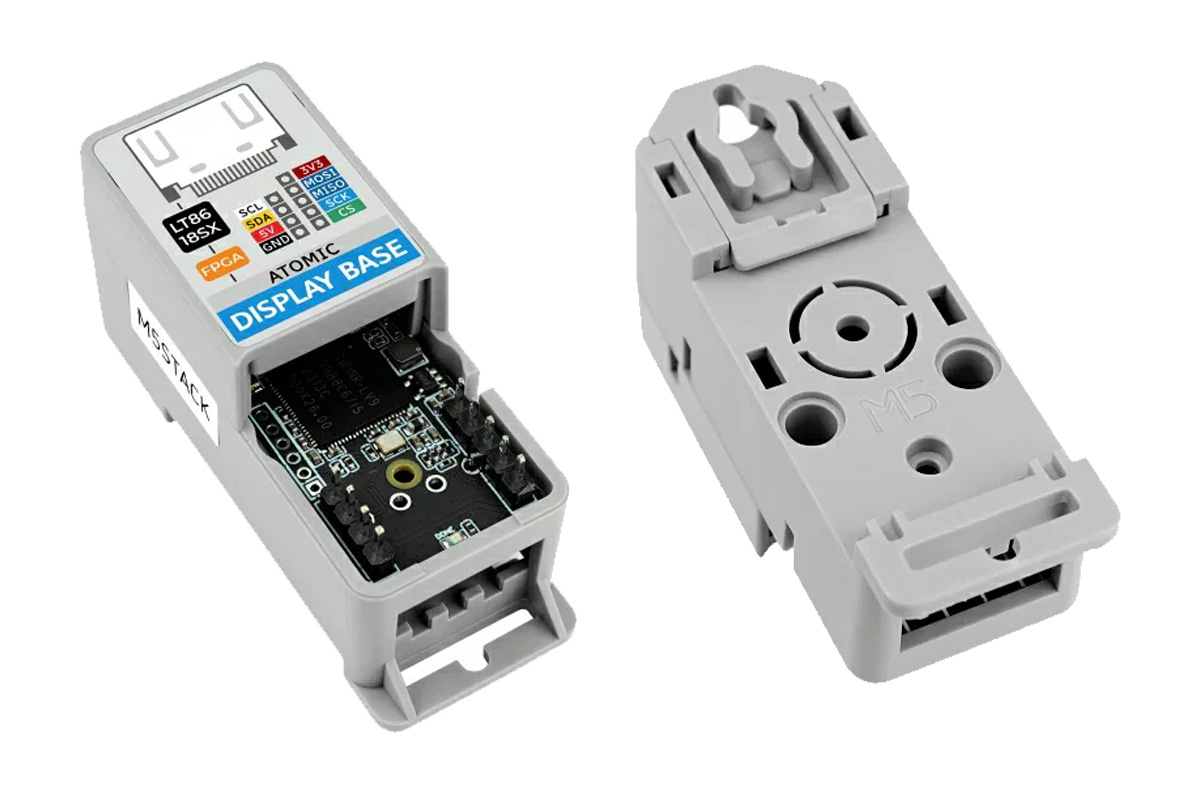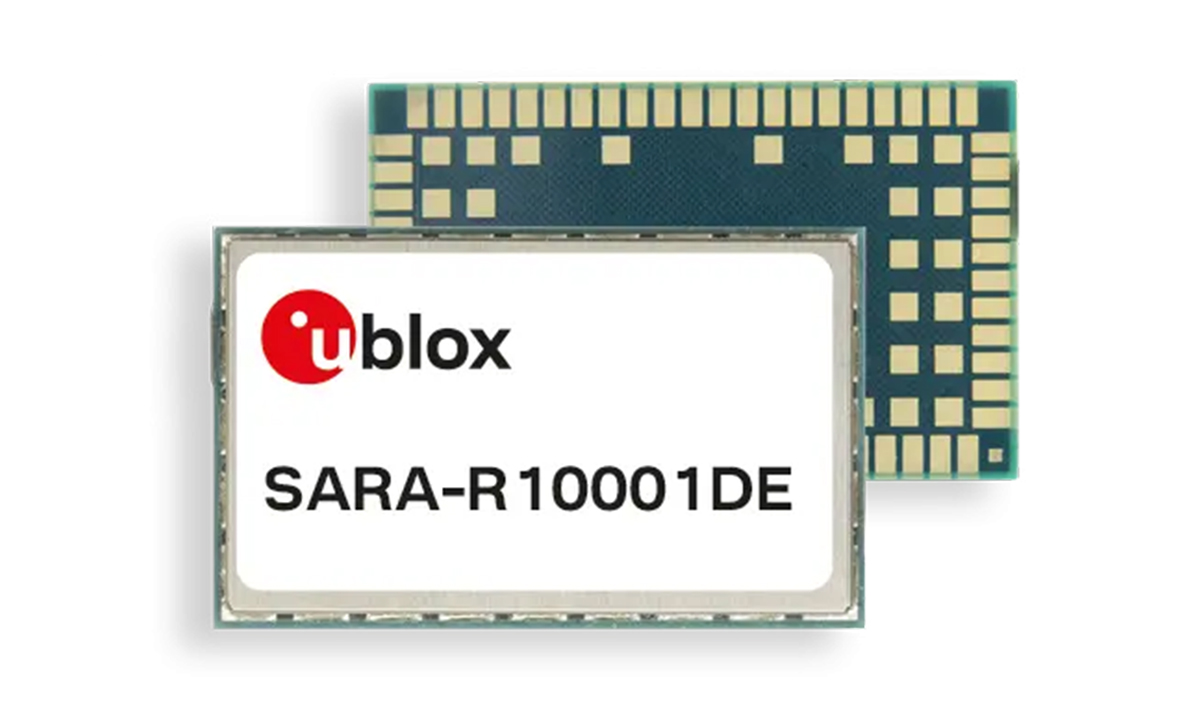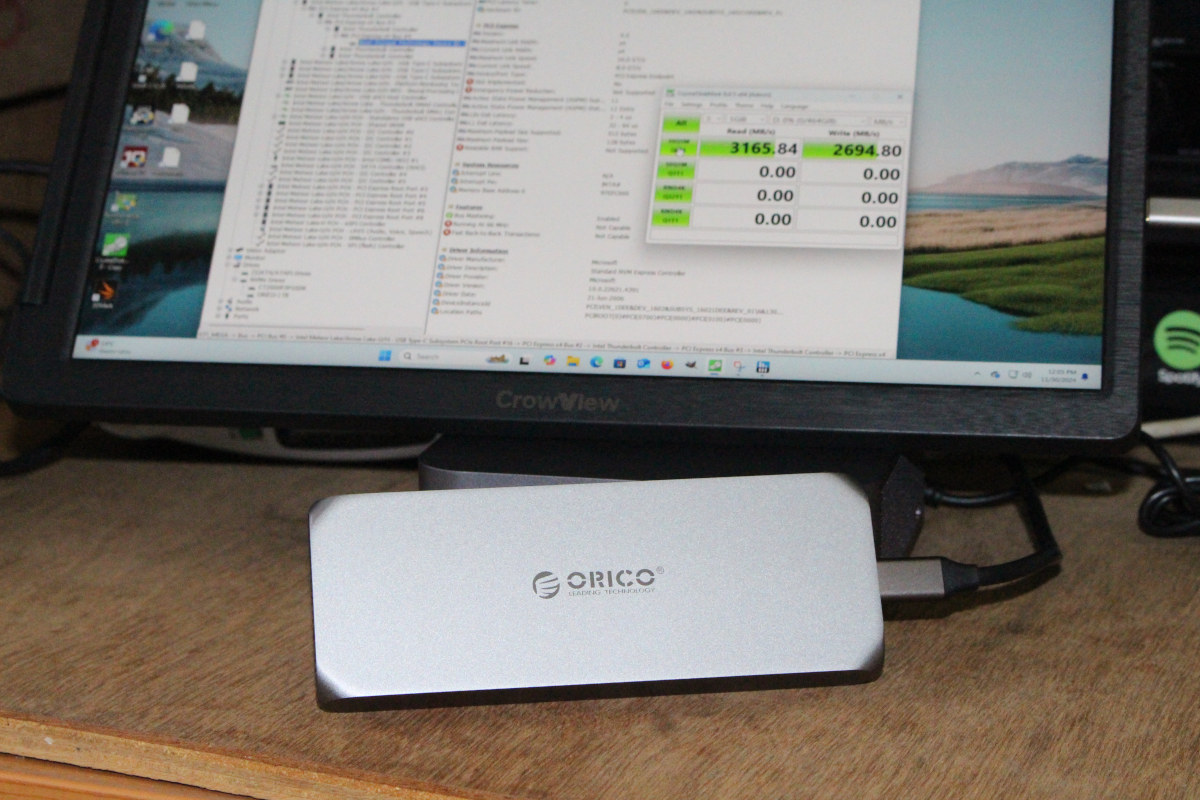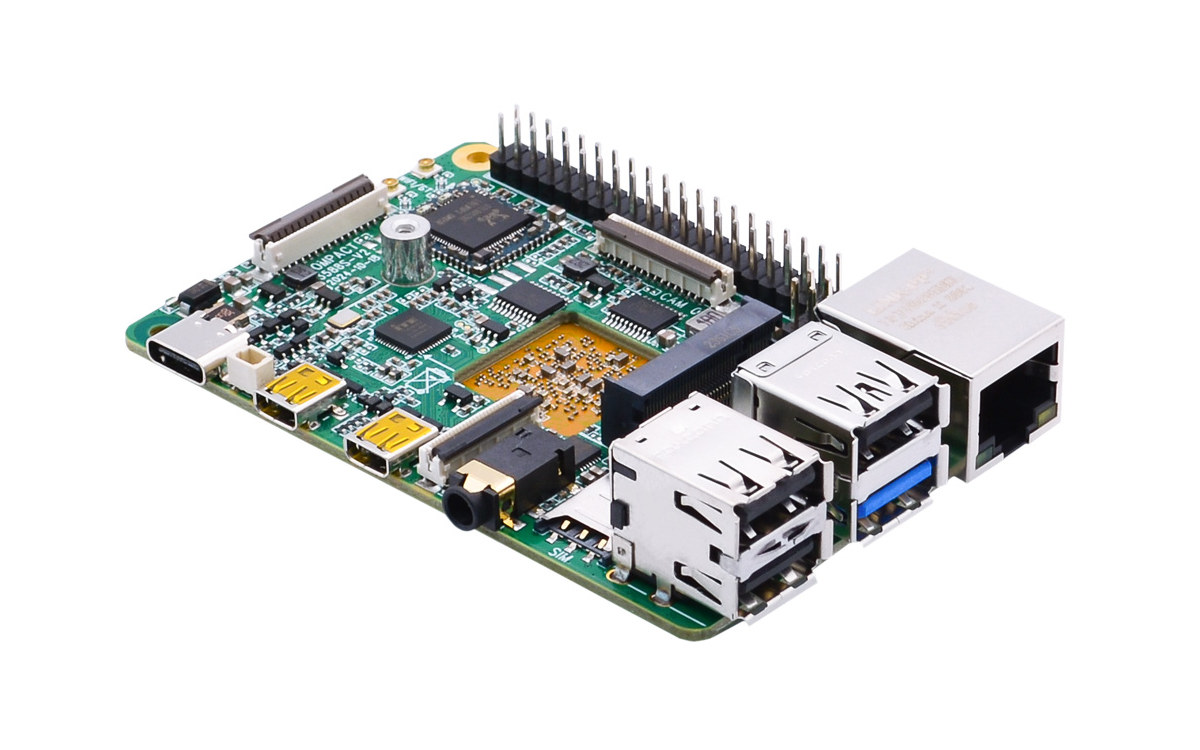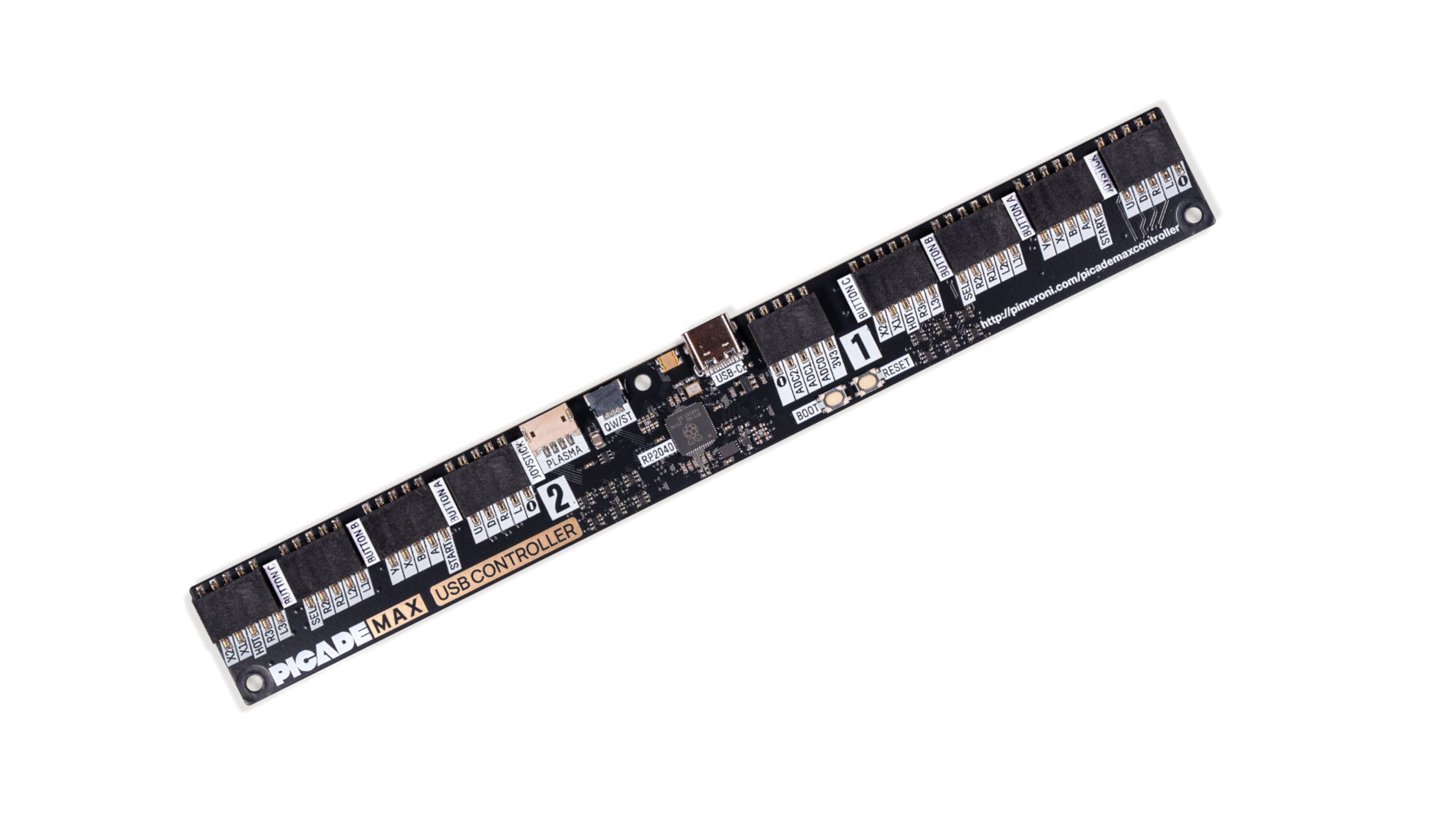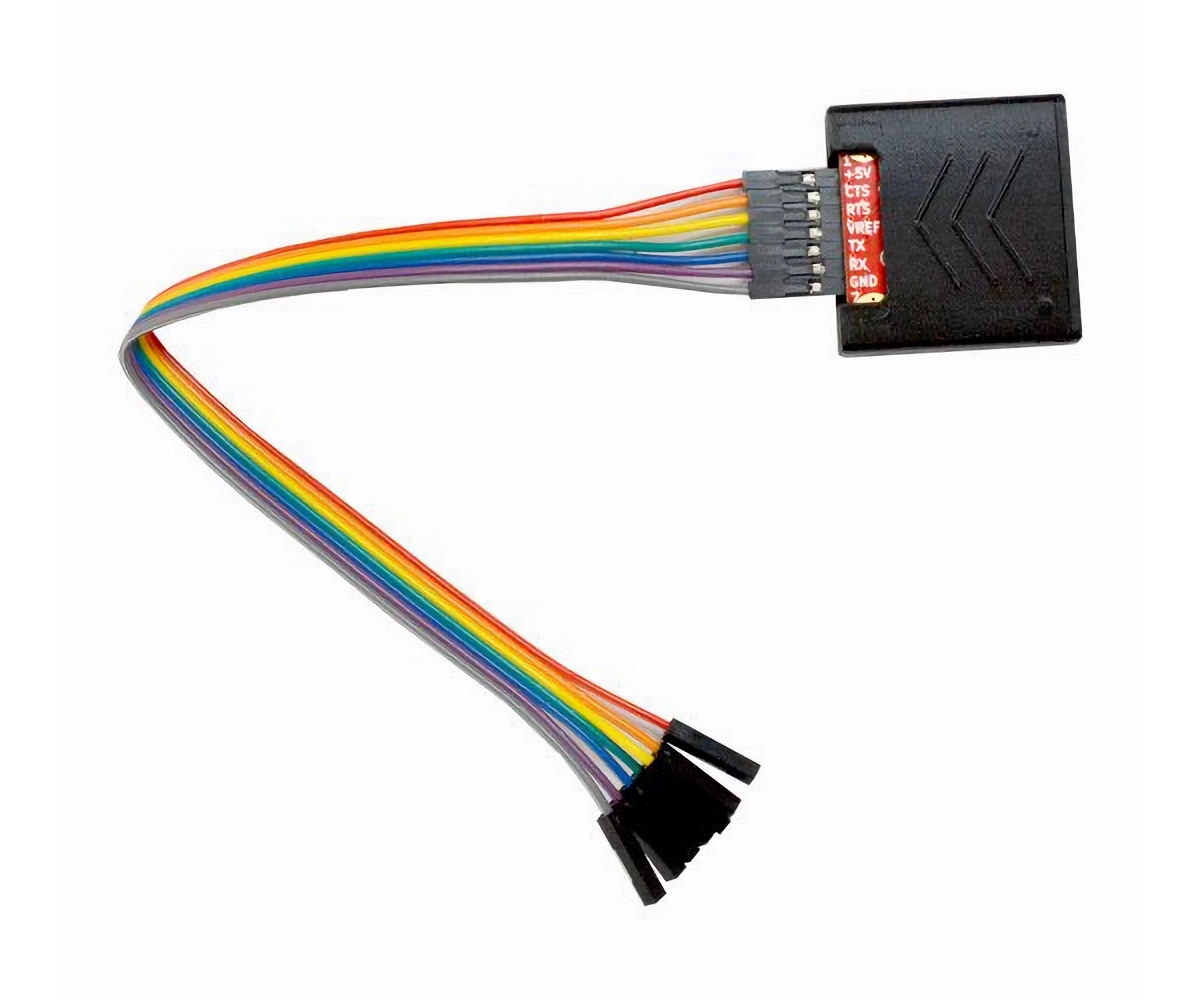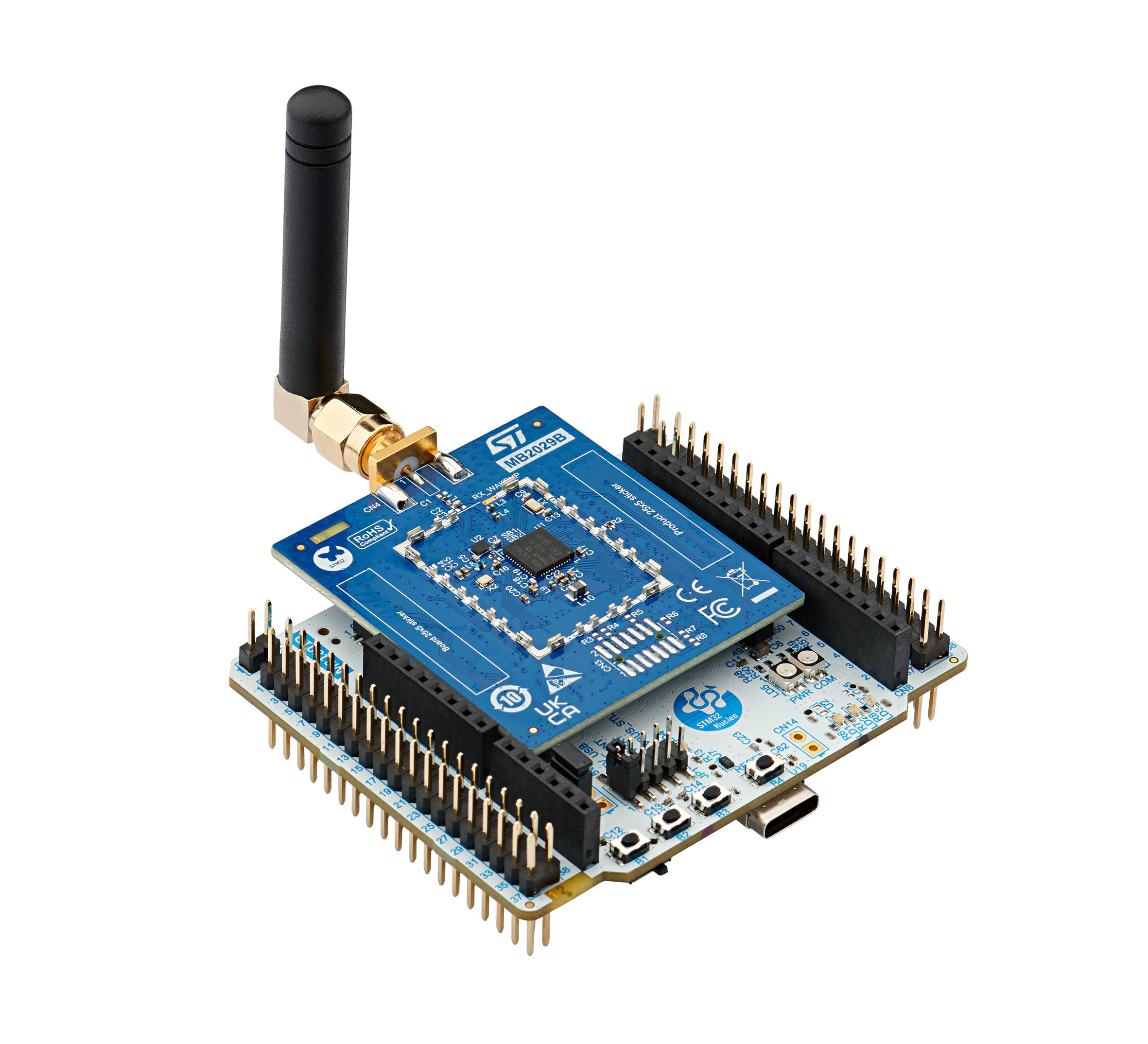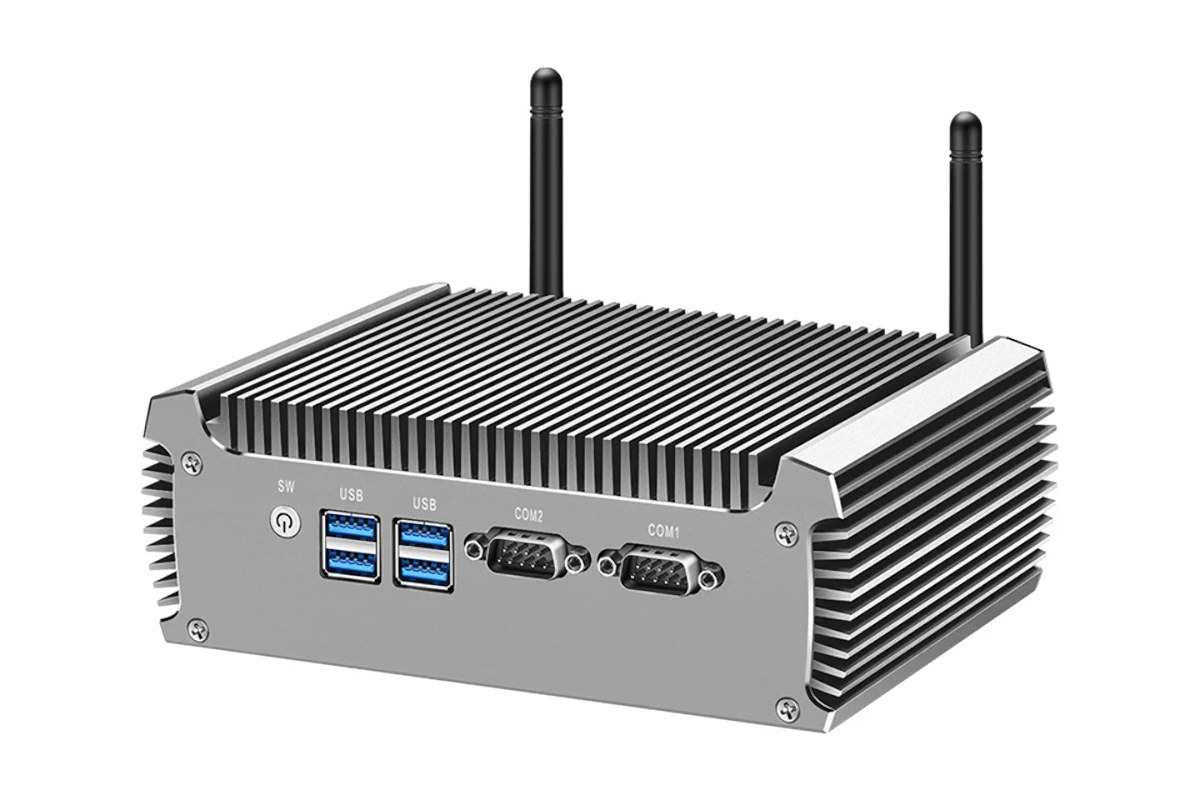M5Stack has recently launched the M5Stack ATOMIC Display Base, an HDMI display driver designed to emulate traditional SPI TFT-LCD data output using Gowin GW1NR-9C FPGA and a built-in LT8618SX RGB-to-HDMI chip and designed to work with the company’s Atom IoT controller family based on ESP32 wireless microcontrollers. The module supports up to 720p (1280×720) image output with a 24-bit color depth and has an average frame rate of 12–16 FPS. Additionally, it can be paired with ATOM series hosts for various memory and application needs. These features make this compact device suitable for industrial control displays, smart home information screens, educational and conference presentations, and remote monitoring displays. The only downside of this device is that it requires a display with adaptive resolution scaling to avoid compatibility issues. M5Stack ATOMIC Display Base (HDMI display driver) specifications FPGA – Gowin GW1NR-9C (PDF datasheet) FPGA with 8,640 LUTs used to simulate SPI TFT-LCD data […]
u-blox SARA-R10001DE LTE Cat 1bis Module integrates an eSIM with Multi-IMSI and eUICC support
u-blox has introduced the SARA-R10001DE, an LTE Cat 1bis module with integrated eSIM featuring multi-IMSI technology and eUICC functionality. The module is pre-provisioned with Wireless Logic’s Conexa IoT Network SIM profiles for global IoT deployments. The eSIM supports OTA using Remote SIM Provisioning, allowing the module to switch between multiple stored SIM profiles to connect to the best available network. Multi-IMSI technology allows eSIMs to store multiple International Mobile Subscriber Identity (IMSI) profiles, enabling dynamic network switching for uninterrupted connectivity. eUICC functionality, based on the GSMA standard, facilitates OTA updates and profile management, simplifying operator switching and ensuring global compliance. Although SARA-R10001DE is u-blox’s first LTE Cat 1bis module with an embedded SIM (eSIM), we previously covered the u-blox LEXI-R10 LTE Cat 1bis module and associated evaluation kit, as well as Cavli C17QS Cat 1bis module built around the Qualcomm QCX217 microcontroller. u-blox SARA-R10001DE module specifications: LTE module – SARA-R10001DE […]
ORICO COM2-T3 review – A 40Gbps SSD enclosure tested with a 7000MB/s M.2 NVMe SSD
ORICO sent me a COM2-T3 SSD enclosure capable of 40 Gbps speeds for review along with the company’s 1TB O7000 NVMe SSD rated at up to 7000MB/s read speed which converts to about 56 Gbps and should be plenty enough to test 40 Gbps SSD enclosure. Thunderbolt 4 and USB4 are not always equivalent But before going into the review itself, here’s some background information. When I test the USB-A and USB-C ports in mini PC reviews, I rely on an ORICO M234C3-U4 NVMe SSD enclosure with an Apacer SSD. That enclosure was falsely advertised as a “USB4″ enclosure but still works at 40Gbps with an Intel JH7440 Thunderbolt 3 chip that works with 40 Gbps USB Type-C ports and a JMS583 “USB 3.1 Gen 2 to PCIe NVMe Gen3” bridge for USB 3.0 ports up to 10 Gbps. I always assumed a 40Gbps USB-C peripheral would always work with […]
Boardcon Compact3588S SBC – A Raspberry Pi 5 alternative based on Rockchip RK3588S AI SoC with M.2 socket for SSD or 4G LTE module
Boardcon Compact3588S SBC is another Raspberry Pi 5 alternative powered by a Rockchip RK3588S octa-core Cortex-A76/A55 SoC with a 6 TOP NPU for AI acceleration, up to 16GB RAM, up to 256GB eMMC flash, and all the features found in the Raspberry Pi 4, plus an M.2 socket supporting either an NVMe SSD or a 4G LTE module in conjunction with a Nano SIM card slot. It more closely follows the Raspberry Pi 4 form factor, but Rockchip RK3588S’ performance and capabilities make it a direct Raspberry Pi 5 competitor. Contrary to most credit card-sized single board computers, it follows a carrier board + soldered-on system-on-module design, rather than a single PCB. Boardcon Compact3588S specifications: SoC – Rockchip RK3588S CPU – Octa-core processor with 4x Cortex-A76 cores @ up to 2.4 GHz, 4x Cortex-A55 cores @ up to 1.8 GHz GPU – Arm Mali-G610 GPU with OpenGL ES 3.2, OpenCL […]
Picade Max USB Controller board supports two joysticks and up to 30 arcade buttons
Pimoroni Picade Max USB Controller is a Raspberry Pi RP2040 board designed for arcade game consoles with support for two joysticks and up to 30 buttons through standard DuPont socket connectors and one Plasma button connector. The board comes with a 2MB QSPI flash for the firmware, a USB-C port for power and programming, one of DuPont socket connectors exposes three ADC inputs, 3.3V, and GND, and there’s also a Qwicc/Qt STEMMA connector for I2C module expansion, plus BOOT and RESET buttons for programming. Picade Max USB Controller specifications: Microcontroller – Raspberry Pi RP2040 dual-core Arm Cortex M0+ MCU @ 133 MHz with 264kB of SRAM Storage – 2MB QSPI flash supporting XiP USB – 1x USB Type-C port for power and programming User inputs DuPont socket connectors 2x 4-way joystick inputs 30x arcade button inputs Plasma button connector Expansion Qw/ST (Qwiic/STEMMA QT) connector for I2C modules 3x ADC […]
Olimex USB-SERIAL-L is a USB-to-serial debug board with CTS/RTS pins, up to 3Mbps baud rate, adjustable voltage from 0.65V to 5.5V
There are already many USB-to-TLL debug boards on the market, but Olimex USB-SERIAL-L open-source hardware USB-to-serial board is more advanced than most with not only Tx/Rx pins, but also CTS/RTS pins, support for up to 3 Mbps speeds, and an adjustable voltage from 0.65V to 5.5V to cater to a wide range of boards. Olimex USB-SERIAL-L specifications: USB-to-serial chip – Silicon Labs CP2102N Seven signal lines – +5V, GND, CTS, RTS, TX, RX, Vref Baud rate from 50bps up to 3Mbps Output buffers with adjustable levels from 0.65 up to 5.5V USB – USB Type-C port for power and connect to host Misc – Power, Tx, and Rx status LEDs Power Supply Input – 5V via USB-C port Output – +5V to the target Dimensions – 35 x 35 x 8 mm (Custom 3D printed plastic box) Seven 200 mm long cables The Vref signal is used to adjust the […]
STMicro NUCLEO-WL33CC1 and NUCLEO-WL33CC2 boards features STM32WL33 Cortex-M0+ Sub-GHz wireless MCU
STMicro unveiled the STM32WL3 sub-GHz wireless MCU family last year and has now announced the general availability of the STM32WL33 Arm Cortex-M0+ microcontroller, along with two development boards namely the NUCLEO-WL33CC1 and NUCLEO-WL33CC2 for battery-powered smart meters and smart building and industrial monitoring solutions using wireless M-Bus, Sigfox, WiSun, LoWPAN or Mioty LPWAN protocols among others. The NUCLEO-WL33CC1 and NUCLEO-WL33CC2 development boards look the same, but the former supports 826-958 MHz high-band frequencies, while the latter handles 413-479 MHz low-band frequencies. STMicro NUCLEO-WL33CC1/2 specifications: SoC – STMicro STM32WL33CCV6 MCU Core – Arm Cortex-M0+ up to 64 MHz Memory – 32KB SRAM with full retention Storage 256KB flash 1 KB OTP flash (user data) Sub-GHz Wireless 413-479 MHz or 826-958 MHz frequency bands with OOK, ASK, 2(G)FSK, 4(G)FSK, D‑BPSK, and DSSS modulations Compatible with proprietary and standardized wireless protocols such as WM-Bus, Sigfox, Mioty, KNX-RF, and IEEE 802.15.4g Low-power autonomous wake-up […]
Barebone Intel Celeron 2955U or Pentium 3805U fanless industrial mini PC goes for $60 (Promo)
If you’re in need of a low-end, cheap x86 platform you’re in luck since XCY is selling the X46G industrial fanless mini PC powered by an Intel Celeron 2955U Haswell processor or a Pentium 3805U Broadwell CPU for just about $60 as a barebone system, or around $74 with 4GB of RAM, a 64GB SSD, and a WiFi module as part of a Black Friday 2024’s promotion. It’s even cheaper in some other shops, as we’ll see below. Both CPUs have been discontinued since 2021, and nobody should use those in a desktop system unless you are of the very patient type. However, if you want to run some lightweight Windows or Linux application(s), make use of RS232 ports for industrial control, set up a Full HD HTPC, configure a dual GbE server, or need to run FreeDOS or similar x86-only operating systems, those ultra-cheap Intel mini PCs might prove […]


